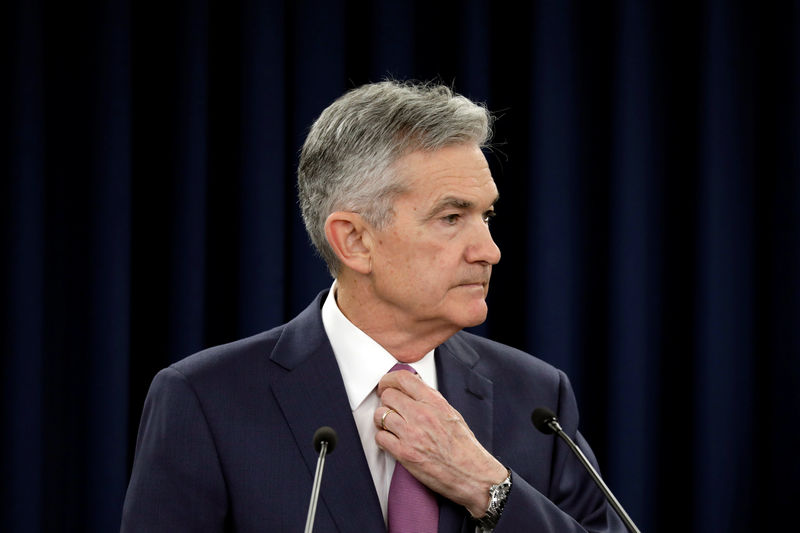This post was originally published on this site
https://i-invdn-com.investing.com/news/LYNXMPEE5D00P_M.jpg
Investing.com – The Fed’s delayed response to tackling red-hot inflation forced it into a game of catch up, ushering in the fastest pace of rate hikes in decades, but now even as Fed chairman Jerome Powell doubled down on further hikes there are still lingering expectations that as the economy buckles under pressure a pause will come sooner rather than later.
Following the Fed’s fourth-straight 0.75% rate hike earlier this week, Powell said that “the ultimate level of interest rates will be higher than previously expected.”
The unexpectedly hawkish tone sparked a ferocious scramble to reprice where interest rates will peak, with consensus now expecting a terminal rate of roughly 5% rather than around the 4.6% level the Fed had projected at its September meeting.
The hawkish tone from the Fed chief, however, doesn’t appear to have squeezed all the life out of investor bets on a sooner rather than later Fed pause.
“They want to slow, they don’t want to [overtighten] and be seen as blowing it twice,” Tim Courtney, Chief Investment Officer at Exencial Wealth Advisors told Investing.com in an interview on Friday.
Others suggest that there is already enough evidence of slowing inflation to provide the Fed with an offramp from its hawkish path toward higher rates.
“We’re seeing inflation coming down in a lot of different ways. Housing has peaked, and commodity prices including in oil and gas, lumber, and steel, are “way down from the highs,” Eric Diton, President and Managing Director at The Wealth Alliance, said in an interview on Thursday with Investing.com’s Yasin Ebrahim.
Fed Facing ‘Difficult’ Demolition Job on Labor Market
The Fed has put the labor market in its primary crosshairs in the hope that rising rates will stifle demand for employees, keeping a lid on wage growth, and ultimately help tame inflation.
But as the better-than-expected October payrolls data indicated on Friday, tackling growing wages and employment, is proving “very difficult for the Fed to do much about,” Diton added.
“Part of it is just the fact that the labor pool is shrinking,” Diton says, pointing to shifting demographic trends including retiring baby boomers, who had less kids than their parents did, people taken out of the workforce by the effect of long-COVID, and lower immigration. “All those things point to a shrinking labour pool, and I think that’s going to be the biggest challenge to overcome for the Fed.”
Diton, however, pushes back against those calling for the Fed to cut rates, insisting that the central bank shouldn’t be “quick to ease,” but has to “give the incredible pace of tightening time to permeate through the economy.”
“I don’t want to see them hike any more than then than they already did, but I think they’re going to,” he added.
Beyond inflation, meanwhile, other factors including political pressure may also twist the Fed’s hand into a less hawkish stance, with the U.S. mid-term elections now just days away.
“Even though the Fed is talking very hawkish, I think they’ll stop because there are other pressures coming to them for example, how much the United States government is spending on interest on its debt,” Courtney added.
Earlier this week, The Congressional Budget Office estimated that by 2052, interest costs could be nearly three times what the federal government has historically spent on R&D, nondefense infrastructure, and education, combined.
Stocks Nearing Fair Value as End Game to Fed Hikes Looms
The damage on stocks from the Fed’s higher interest rate regime has pushed the the bulk of the market, excluding mega cap names, to fair value, suggesting that there isn’t much more room to go down, according to Courtney.
“If you look at the mega cap names, they are still trading above their long-term average on a price-to-earnings multiple at about 23, 24, or 25 times earnings, but stripping out the largest stocks and just looking at the rest of the market, they’re trading slightly below their average of the last 30 years,” Courtney added.”I think most of the market has already priced in [the rate hikes] and is in a valuation range where it’s okay right now.”

